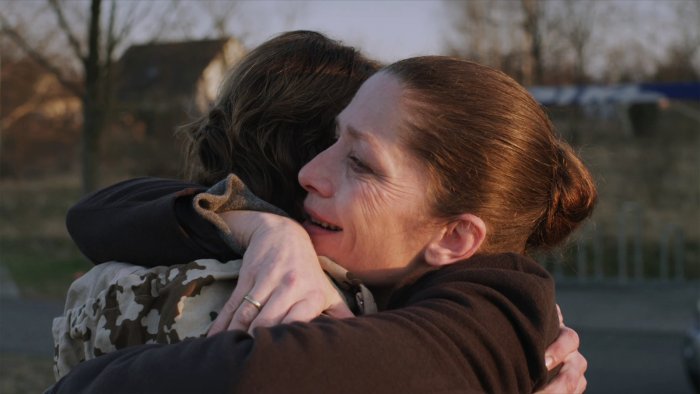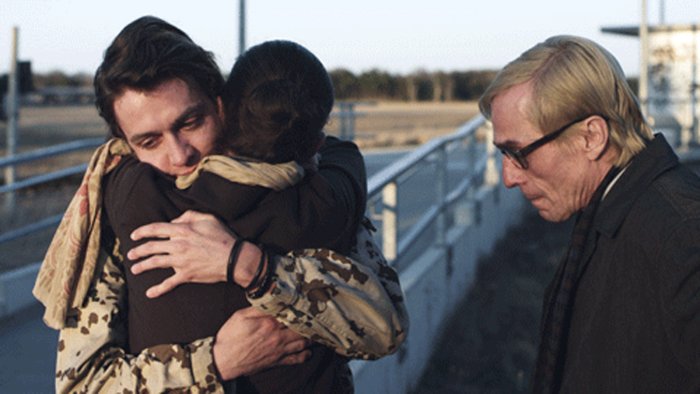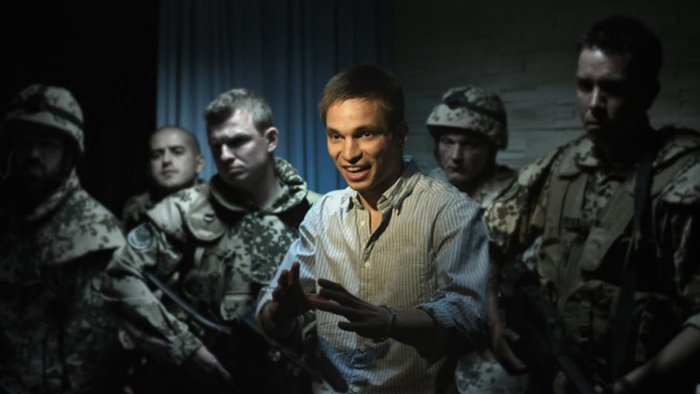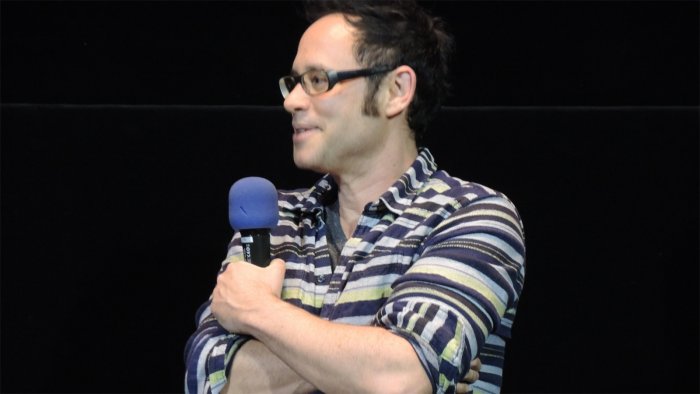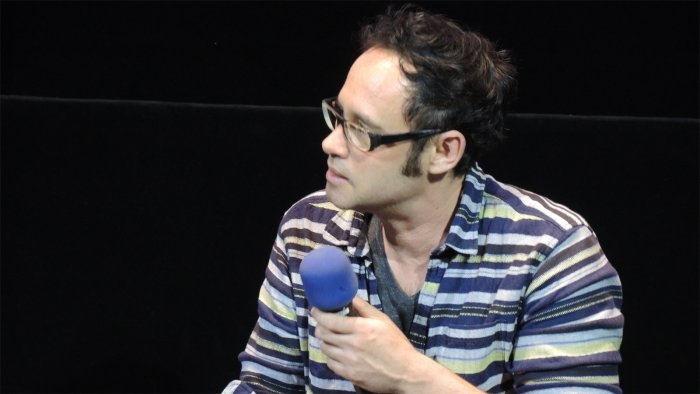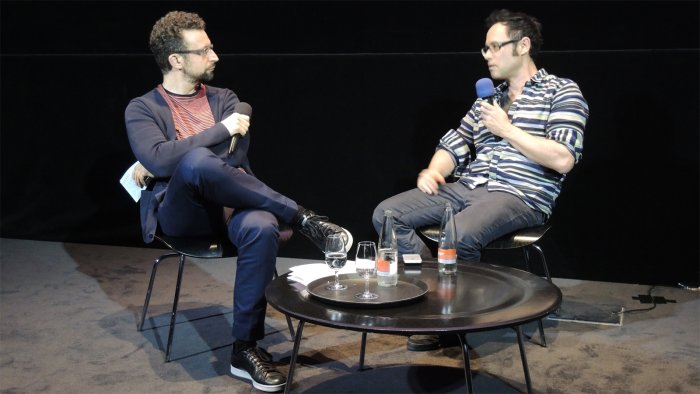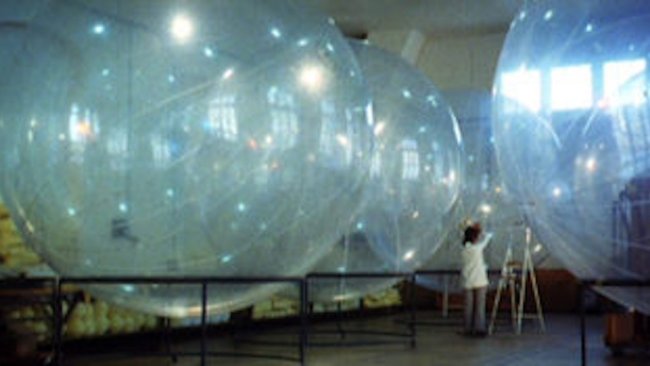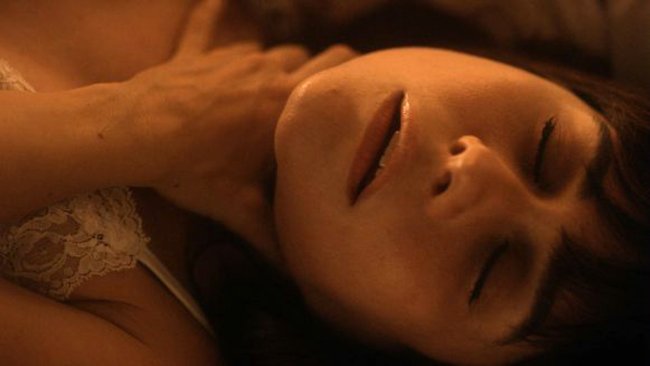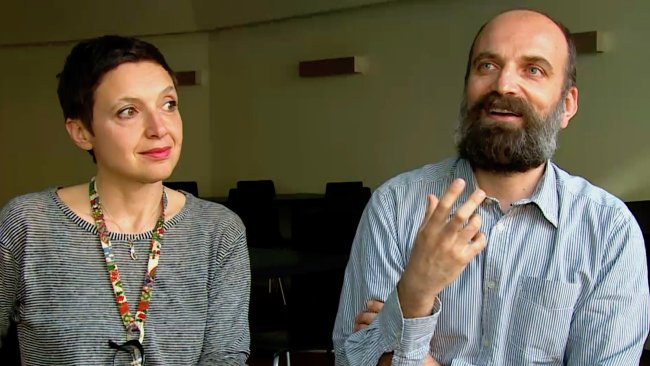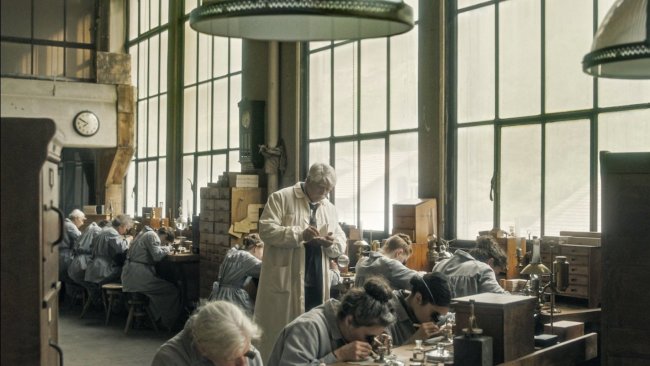Omer Fast | Continuity
In occasion of the screenings of Omer Fast's works at the Festival Videoex in Zurich, we propose the interview Filmexplorer had the chance to do with Omer Fast last year in Basel on his «Continuity», one of the film in the Art Basel Film Programme 2016. Below is the Interview with him by Giuseppe Di Salvatore.
Thanks to the collaboration with the Festival del film Locarno, Filmexplorer can also host the Q&A on Fast’s «Continuity», which was lead by Sergio Fant at the Stadtkino Basel (June 2016).
Text: Giuseppe Di Salvatore
FILMEXPLORER INTERVIEW WITH OMER FAST
Giuseppe Di Salvatore (GDS): Continuity, like most of your films, works on many layers. One is very cinematographic, so to say, as you often use the classic device of suspense. Hitchcock stressed that, if mystery films display the passage from ignorance to knowledge, suspense films are not interested in the knowledge of facts, but concentrate on the emotions of the audience. How important is the emotive layer in this film for you?
Omer Fast (OF): The emotions I’m interested in are often entangled, ambiguous or contradictory. There’s no linear passage from ignorance to knowledge. We, like the characters and subjects I’m drawn to, are often trapped. The glimpses of truths we are given can give some orientation but they’re subjective truths, more like passing signposts: temporary and provisional.
GDS: Another “classic” aspect of Continuity is the centrality of crime. But the crimes of war and drugs milieu seem to be only an introduction to the more fundamental criminality of (the holy) family. Is family, considered as an exclusive and self-consuming institution, criminal?
OF: It’s not so much criminality that interests me but rather deviancy. Perhaps we can say that a family is a very authoritarian institution in which role-playing, rituals and rules are essential. In Continuity, the criminality you mention results from the parents deviating from their set roles, from subverting the rule book and not staying in character.
GDS: The topics of family and Germany seem to conflate in Continuity. Can you say that the family aspects of control, order, possessive love apply equally to Germany – or just German kitchens and sauces?
OF: It’s not incidental that cooking and eating are rituals that repeatedly come up in Continuity. If we think about families and households as institutions that function by ordering spaces, the kitchen is arguably a border region between the more public space of the dining or living room and the more private space of the bedroom or bathroom. The kitchen is also the space where work is done and where jobs are assigned. In Continuity, the various family jobs and the spaces they’re assigned to keep getting changed but the food always stays the same. I love German cuisine. I don’t think it gets enough credit.
GDS: What is the main weapon in the generative narrative of Continuity: the rifle, the car, the kiss, or the pill?
OF: There is no main weapon, actually. There is a fetish object at the center of the story and that is the son, Daniel.
GDS: For the German youth of Continuity, drugs and war seem to function as an escaping solution from the suffocating pressure of family and/or homeland. Here, this pressure also takes the form of incest. Why?
OF: Incest is an outlet for venting pressure. It allows pressure to escape by temporarily subverting the strict codes that create it. In Continuity, it’s clear that the incestual scenes we are witness to are just temporary moments of relief for the characters. After all, a new son always appears once the incestual espisode is concluded.
GDS: You speak of the partial repetition (of narrative patterns, images, and scenes) in Continuity in terms of doubling and splitting. Would you describe this construction as a variation on a theme? As a kaleidoscopic proliferation? Or as a continuous fragmentation – a continuous discontinuity? Why do you cherish this specific form?
OF: Repetition creates a fundamental shift in perception: from registering what a situation is to thinking about how it should or could otherwise be.
GDS: We saw a similar version of Continuity as installation at Jeu de Paume, Paris, in 2015. The relevant formal difference of this former version was the presence of the loop. How important is the loop for you in a project like Continuity?
OF: A looped story allows viewers to enter at any point. An unending non-linear narrative structure also reflects the subject of Continuity, which is a couple whose linear sense of time and causality has been disrupted by trauma. It’s very important for me to convey what the disruption is like without necessarily explaining what caused it. There’s just an unassimilable present, no back story and no resolution. The circular structure lends itself perfectly to talking about trauma.
GDS: For Continuity you’ve experimented with installation versions in art spaces and theatrical versions in the cinema. Is there a version you prefer? What are the gains/losses of projections in cinema?
OF: Cinema is very seductive because it offers superb visual and acoustic conditions. But it’s a passive experience because it’s very sedentary and cloistered. Art spaces tend to be more open and chaotic, more unforgiving for a work that requires concentration. But they enable a richer dialog with space – material space and social space – and definitely foster more experimentation. The premiere exhibition of Continuity in Documenta in 2012 was very special. We built a wooden house in a park, which nestled in the woods like some kind of fairy-tale. It was a more perverse and associative way to show the work and it should have made the park a little bit stranger for the people who saw it.
Info
Omer Fast | Interview | Continuity | Film | DE 2016 | 86’ | Art Basel Film Programme 2016 | Videoex Zurich 2017
Omer Fast at the Festival Videoex 2017 in Zurich
Screening of the first version (2012) of «Continuity» on gb agency Gallery Website
First published: June 26, 2016
